EON-18: a secret expedition of the Northern Fleet
In just a month, seven transport vessels of the first allied convoy arrived in Arkhangelsk. Until the end of the year, the ports of the USSR accepted seven such caravans - from “PQ.0” to “PQ.6”, consisting of 52 ships. Thus, only in 1941 a year, 699 aircraft, 466, were delivered from England and the USA to Arkhangelsk. tanks, 330 wedges and many other military cargo. In the opposite direction during the same period 136 tons of timber, ore and other raw materials were sent (a total of four caravans - from “QP.000” to “QP.1” with a total of 4 vessels).
Maxim on a trawler
Allied help came from the shores of England and Iceland. Approximately before Spitsbergen, the caravans were guarded by the Navy of the United Kingdom and the United States, and in the Barents Sea, Soviet ships and planes took the baton, along with British warships based in the north of the USSR since the summer of 1941. And yet, at the beginning of the war, our Northern Fleet was extremely weak. Formally, he counted 51 pennants, although only 8 destroyers and 15 submarines could be considered a real force. Large ships in its composition at that time were not at all. Therefore, already in the summer of 1941, the most modern civil vessels of the Northern Shipping Company began hastily arming, installing on them several 75-mm or 45-mm guns and machine guns of the Vickers, Hotchkiss, or even just Maxim systems. After that, the former fishing trawlers and steamers were transferred to the North the fleet already like minesweepers or patrol ships. That’s how the Fedor Litke icebreaker became the SKR-18 patrol boat, the Semyon Dezhnev icebreaker steamer became the SKR-19, and ordinary trawlers such as the RT-33 and RT-76 became the T-894 and T-911 minesweepers . Of course, these ships could be considered full-fledged combat units only with a very big stretch, which means that the Far North was in dire need of real warships.
The memory of the ships participating in the secret expedition “EON-18” is stored in the form of a few surviving photographs and modern models. In the photo the destroyer "Reasonable".
Destroyers in the winter "coat"
That is why the order of the People's Commissar of the Navy No. 00192 from 19.06.1942 approved a plan for transferring several warships from the Pacific Fleet to the Northern Fleet. The operation under the code “EON-18” (a special purpose expedition) was carried out in conditions of maximum secrecy, and the entire transition of ships along the Northern Sea Route was required to be completed before the end of navigation.
Such operations on the secret transfer of warships from one fleet to another were carried out before. The first of these, EON-1, took place as early as the summer of 1933, when the destroyers Uritsky and Rykov, Smerch and Uragan patrol ships, submarines D were carried out along the White Sea-Baltic Canal from Kronstadt to Murmansk -1 and D-2. Passed ships of the Navy and the Northern Sea Route. So, in 1936, the destroyers Stalin and Voikov (Operation EON-3) were transferred to the Pacific Ocean, and in 1940, the submarine U-423 (EON-10) was transferred. Now it's time to transfer the ships in the opposite direction - from the Pacific Ocean to the Barents Sea.
According to the plans of EON-18, the leader of “Baku” and three destroyers went to the Northern Fleet: “Reasonable”, “Enraged” and “Revious”. The main advantage of such ships has always been considered a high speed (up to 40 knots!) And high maneuverability, which was achieved due to the very weak armor protection. Their hull maintained water pressure only in 2 t / m2, therefore the thickness of the skin in some places did not exceed 10 mm. But the destroyers were never intended for navigation in the Arctic, where ice pressure could reach 10 − 12 t / m2. That is why, at the docks of Vladivostok, all EON-18 ships were dressed in a special “ice coat” made of boards and wooden bars 100 x 100 mm, sheathed with steel sheets from 3 − 5 mm thick along the sides to 15 mm in the vicinity of the stem. Such a “fur coat” protected destroyers on 3 m below the waterline and 1 m above it. To imagine the amount of work done, it should be noted that the “dressing” had not tiny little ships, but full-fledged warships with a displacement from 1700 to 2500 and a hull length from 113 to 127.
All the interior of the destroyers were insulated for future frosts and seriously reinforced with additional internal struts made of box-shaped metal beams and 250 bar x 250 mm. In addition, many of the mechanisms have also been specially refined, taking into account the expected low temperatures and strong vibrations of the hull due to a collision with ice. Bronze propellers received reinforcement in the form of a special steel lining, and some of them were simply replaced by folding steel propellers with removable blades, which allowed them to be repaired during sailing. All these works were carried out almost around the clock under the direction of the flagship ship engineer, captain of the 2 rank A.I. Dubrovin, who already had experience of participation in Operation EON-3. In order to comply with the secrecy regime, the ships were preparing for a long voyage under the legend of the official relocation of the destroyers division to Kamchatka.
Fog accident
July 15 ships "EON-18" were removed from the anchor and out of Peter the Great Bay in the Sea of Japan. The leader of "Baku" was commanded by the captain of the 3 rank B.P. Belyaev. The destroyers are captain of the 3 rank V.K. Nikiforov (“Zealous”) and lieutenant commander V.V. Fedorov (“Reasonable”) and N.I. Nikolsky ("Enraged"). The captain of the 1 rank V.N. Obukhov, who commanded the destroyer “Stalin” in 1936 during its transition along the Northern Sea Route as part of EON-3. Together with the warships, the tanker Lok-Batan and the transport vessels providing the Volga and the Blacksmith of the Forests set off.
Two days later, the caravan passed through the Tatar Strait and arrived at De-Kastri Bay (now - Chikhachev Bay). At that time, the southern part of Sakhalin and all the Kuril Islands belonged to Japan, so for the USSR warships this was the only possible way to the Bering Sea. Having replenished supplies of fuel oil and water to De-Kastri, the caravan continued moving, but the next day in the Amur estuary the destroyer “Zealous” had an accident. Moving in a thick fog, he broke down the caravan and collided with the Terney transport. The destroyer's entire nose was crumpled and rolled to the right by about 10 m in length. Ships EON-18 stood at anchor until July 19, until the Navy Commissar decided to reduce the caravan.
released to the 30 anniversary of the heroic transition from Vladivostok to Murmansk. This sign is dedicated to the destroyer "Reasonable".
The damaged Revolutionary was towed to Sovetskaya Gavan, where in the dock the warped bow of the ship was cut off and made anew from three new sections. On the tenth day after the accident, the destroyer had already left the dock, but the command decided that the “Zealous” was hopelessly behind the caravan, so he was left in the Pacific Ocean. In August, 1945, during the war against Japan, the ship took part in the landing of Soviet troops on Sakhalin in the port of Maoku (now - Kholmsk).
And the caravan passed through the Sea of Okhotsk, passed the Soviet and Japanese minefields and on July 22 reached the First Kuril Strait, along which the border between Japan and the USSR passed. At that time, Japanese destroyers were constantly on duty there, in full view of whom the ships and ships of EON-18 and proceeded to the Pacific Ocean. It is believed that it was after this meeting that the Japanese intelligence reported to Berlin about the relocation of warships from the Pacific Ocean to Murmansk. In the evening of the same day, the Soviet destroyers entered Avacha Bay and anchored in Tarja Bay (now the city of Vilyuchinsk), where a diesel submarine base was deployed since 1938. Three days later, the ships replenished stocks of fuel oil, which was supplied from coastal tanks by gravity through hoses carried by rafts on 200 meters from the coast. Refueling, the destroyers left the base and continued to move north.
In the morning of July 30, the ships came to Chukotka, having overcome almost all the way from Kamchatka to Providence Bay in dense fog. There was another incident: when approaching the pier, “Furious” caught the ground, damaging the screws and bending the tip of the right propeller shaft. Repair work was carried out afloat, taking a whole week, but it was not possible to get rid of the shaft beat. Later, the destroyer course had to be limited to eight nodes, and later (already in Dixon) the right screw from the damaged shaft was removed altogether.
Attention - the raider!
The icebreaker Mikoyan joined the caravan in Providence Bay. From November 1941, he made an unparalleled round-the-world voyage from Batumi through the Bosphorus and the Suez Canal to the Cape of Good Hope, and then, passing Cape Horn, he passed through the entire Pacific Ocean to Chukotka. Moreover, in the Aegean Sea, the icebreaker was forced to actually make its way through the zone of operations of the naval and air forces of Italy and Germany.
On August 14, the destroyer convoy again set sail and near the village of Whalen met the first ice. The next day, already in the Chukchi Sea, the ships entered the ice with a density from 7 to 9 points. Destroyers could move through such ice only with the help of the icebreakers Mikoyan and Kaganovich, which simultaneously with the caravan EON-18 provided navigation for five transport ships with strategic cargo. It was the Chukchi Sea that became the most difficult part of the entire transition. At some moments, the pressure of the ice fields became critical, while the shipborne instruments fixed the deflection of the sides more than 100 mm.
True, the destroyers were disturbed not only by the polar ice. So on August 26, EON-18 received a message about the appearance of the German heavy cruiser Admiral Scheer in the Kara Sea. The command of the Navy ordered urgently to take all measures to increase combat readiness, and in the case of meeting with the enemy ships they were required to attack and destroy. It is curious that before the area of the German raider's actions our ships had been going for another month, and three of our destroyers were simply unable to render him at least some serious resistance. But in the last days of August, the Admiral Scheer himself returned to Norway, and the EON-18 ships at that time were still off the coast of Chukotka.
Slowly advancing in heavy ice, icebreakers conducted each destroyer separately, so the caravan in the Chukchi Sea was forced to temporarily separate.
For this reason, “Baku” and “Enraged” have already arrived at Tiksi Bay on 15 September, while “Reasonable” is still going through the East Siberian Sea at the same time. Only in Tiksi the ships again gathered into a single detachment and subsequently moved only together.
By September 24, the caravan completed the overcoming of the most difficult and dangerous section of the Northern Sea Route and, accompanied by the icebreaker Krasin, arrived in Dickson.
After a heavy transition destroyers looked quite satisfactory, although their hull and got a small dent from the compression in the ice. True, the screws “Baku” and “Enraged” had curvatures and cracks, while the beating of the shaft on the “Enraged” caused a very strong vibration of the whole body. Visibly reduced the speed of the ships and the "ice coat." Thus, the maximum speed of the leader of “Baku” was 26 nodes, “Reasonable” - 18, and “Enraged” - total 8 nodes in clear water.
The destroyer "Reasonable" sneaks through the Chukchi Sea. After completing the EON-18, the ship actively participated in the military campaigns, including the 14 escort of the Arctic convoys. He was in service until the end of the war (with a break for repairs).
Interestingly, after the caravan arrived in Dickson, the headquarters of the White Sea military flotilla tried to use the destroyers EON-18 as an escort for icebreakers and transports returning from the Arctic to Arkhangelsk. The command of the Navy was even sent a special request, which immediately came a categorical refusal.
New warships were urgently waiting in Murmansk. October 9 destroyers left Dickson and the next day arrived in the Strait of Yugorsky Ball. In the Varnek bay, the ships replenished fuel supplies and in the evening of October 12 safely passed into the Barents Sea, miraculously avoiding death on German mines. The fact is that German intelligence knew about the transfer of Soviet destroyers through the Yugorsky Shar Strait, although the exact schedule of their movement was unknown to the enemy. The covert mining of the strait was completed by a U-592 submarine, putting mines of various types at the exit of the Yugorsky Ball 24. But the German submarine was late for a day, having mined the strait already after the caravan passed into the Barents Sea. Nevertheless, 14 of October on one of these mines nevertheless the Shchors transport, which was going through the strait to the western coast of Novaya Zemlya, was blown up.
The destroyer caravan arrived safely in Vaenga Bay (now the city of Severomorsk) in the early hours of October 14. On the approach to the Kola Bay, they were met by the commander of the Northern Fleet, Vice-Admiral A.G. Golovko, taken to sea on board the destroyer "Gremyashchy". Thus, in three months the detachment of the ships “EON-18” passed from Vladivostok to the main SF base almost 7360 miles per 762 running hours at an average speed around the 9,6 node. When the destroyers were autonomous about 2000 miles, the ships had to replenish fuel supplies from the coast several times and from the Lok-Batan tanker accompanying the caravan. A significant part of this long journey damaged destroyer "Enraged" was towed by the leader of "Baku".
Thus, the most difficult operation was successfully completed, and after two days the caravan "EON-18" was officially disbanded. As a result, the Northern Fleet was replenished with the most modern ships built at the shipyards of Nikolaev and Komsomolsk-on-Amur in 1938 — 1941.
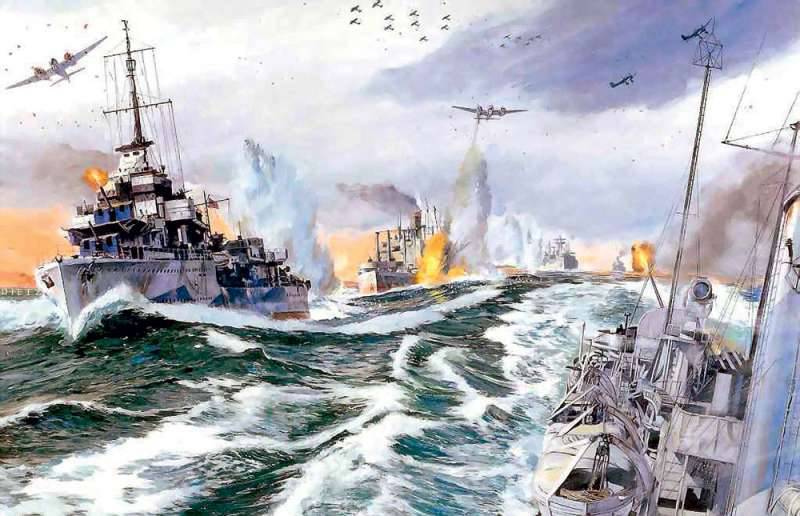
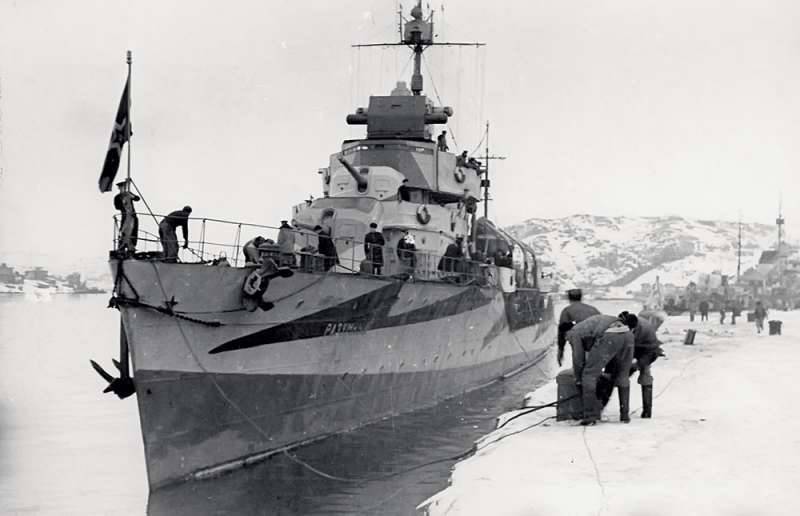
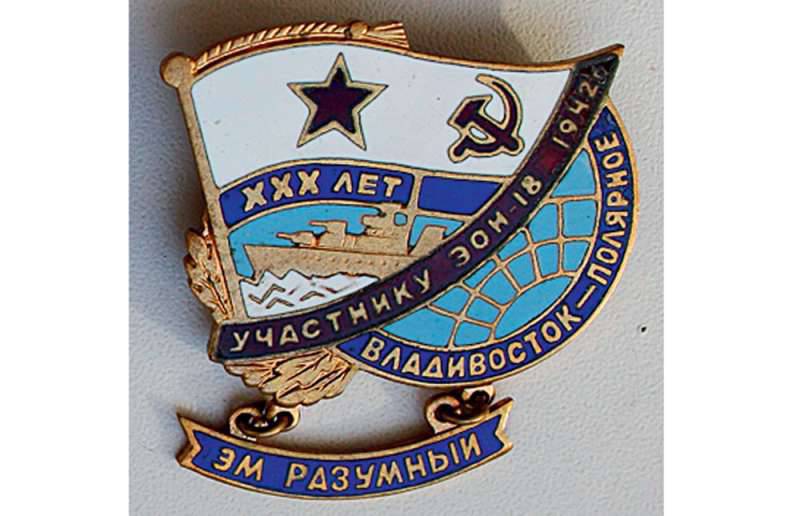
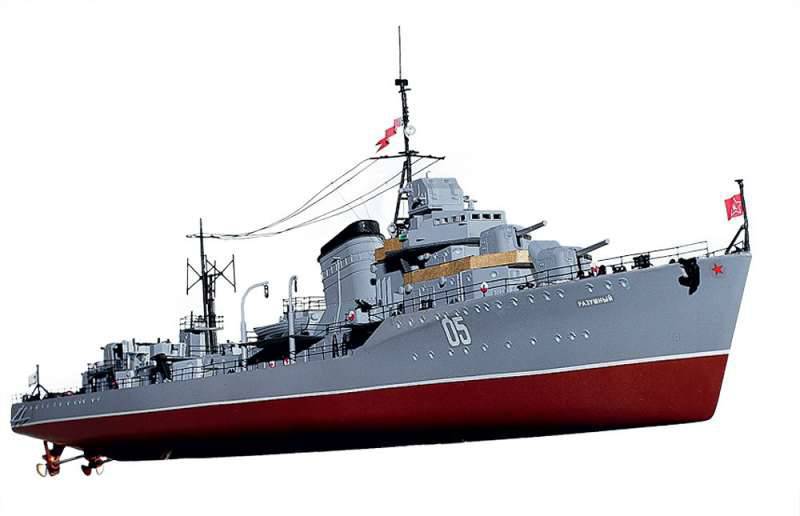
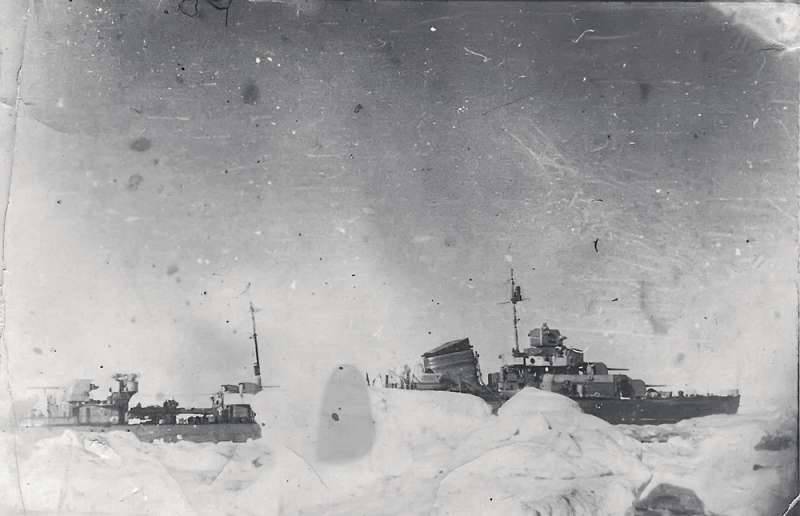
Information